In this heightened state of alert, I’m doing what I can about swine flu… which is, basically, not much. Because we as individuals can’t do too much about it besides wash our hands, cover our mouths, exercise, eat healthy, and get enough sleep – all things we should be doing more or less regularly anyway. No, I did my part by cooking up a couple of pounds of pork in the best way I (now) know how – Chinese barbecue style.
There’s meaty American barbecue slathered with thick, nostril-clearing sauce. Stripped down Korean barbecue with its more delicate, sweet marinade. And then there’s Chinese barbecue – the best of both worlds. The sauce is thick, but roasted on so that it caramelizes and becomes a part of the meat itself. It is sweet, yet savory; spicy, yet subtle. The flavors of hoisin, soy sauce, rice wine, ginger, and garlic melt together to create an olfactory experience that is enough to make you pause with amazement but not enough to stop you from devouring piece after piece.
I grew up eating what’s known as “char siu” pork (pronounced more like “chao sao” in Mandarin) but it was never something I thought about making at home. I don’t remember my mom ever making it, though she would often make Peking duck, something that seems much more fancy (but really isn’t, apparently). Char siu pork is like meatballs – a comfort food that is as natural in leftovers as it is freshly made. In fact, I was most used to it as the filling for my favorite snack – char siu bao, or sweet barbecue pork buns – or as a topping for noodle soup. But I always had it pre-prepared in those dishes, and never really saw the original roast it came from.
That changed last weekend, when I suddenly decided I needed to make char siu bao. Ironically, I’m too lazy to drive 45 minutes to the asian market to buy ready-made char siu bao, but not too lazy to go to Safeway down the street and then spend a good 6 hours making the damn things from scratch. So I got a couple recipes to reference for both the bao (buns) and the char siu, and had a good old mashup time of it.
Here’s the eventual recipe I ended up with, adapted from here and here:
For the char siu pork:
- ~ 3.5 lbs boneless pork shoulder
- 2-3 cloves garlic, minced
- ~ 1 T ginger, peeled and minced
- ~ 1/2 C rice wine or sherry
- ~ 3/4 C hoisin sauce
- ~ 1/2 C soy sauce
- ~ 1/3 C honey
- a dash of five spice powder
Cut the pork along the grain into long strips 1.5-2 inches wide and about 6-10 inches long. Combine all marinade ingredients, then place with the pork into large ziploc bags. Make sure the pork is coated evenly and then seal, removing as much air as possible from the bags. Marinate in the refrigerator overnight (or at least a few hours).
Place a rack on the lower third of the oven and preheat to 375 deg. Fill a pan (or two, depending on amount of meat) with 1/2 ” water and place a metal rack over it. I used two 9×13″ pans with cooling racks with slats about 1/2″ apart. Arrange the meat strips on the rack(s), reserving the marinade in a small pot.
(I got the roasting times from an Epicurious or Gourmet recipe but I can’t for the life of me find the page again, so here’s my best rememory of it…)
Roast for 15 minutes. Meanwhile, heat the marinade to a simmer for a few minutes, then turn off the heat. Baste the meat with the marinade, then roast for another 15 minutes. Baste the meat generously on both sides, turn meat over, and roast for an additional 20 minutes, basting once or twice in the middle. Turn the oven temp up to 400 deg, baste the meat with the remaining marinade, and roast for about 10 minutes or until caramelized. Place the meat on a cutting board and cover with foil for about 10 minutes. Then allow to cool before slicing or shredding for use in soups, char siu bao, or to eat as is. When you’re done, it should look like this (except try to slice across the grain…):
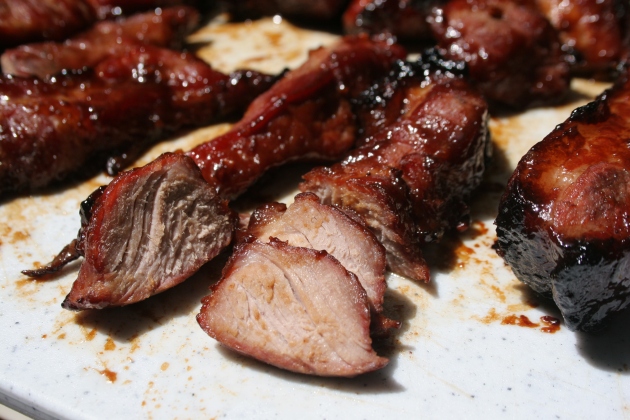
I was pleased with how red the outside of the pork got, since a lot of accounts I read claimed that it was difficult to achieve the vibrant red color you see in the stores. Some recipes had red food coloring, which just seemed weird to me. Thankfully, the visual experience matched the taste and smell I was used to. I’m really rather impressed that my first try at making char siu came out so well!
For the bao, I used this recipe as the base, which includes prepraring the char siu filling as well as the dough for the bao. I modified the filling slightly (still for 24 buns):
- ~ 1 lb char siu pork, cut into 1/2 cm pieces (err on the side of small)
- ~ 2 cloves garlic, minced
- 1/2 a white or yellow onion, minced
- 1 scallion, minced
- 1/4 C soy sauce
- ~ 3 T brown sugar (I only used 2 T but I think it could have been sweeter)
- ~ 1 T cornstarch dissolved in 2 T water
- ~ 2 T oil
Heat the oil in a large wok or skillet. Add the garlic, onion, and scallion and saute until soft but not browned. Add the pork and saute for a minute or two. Add the soy sauce, sugar, and cornstarch mixture and saute quickly until glazed. Allow to cool before filling buns.
For the buns, I followed the recipe exactly (note, just up to step 3, then go back to the previous recipe for the filling). Instead of foil wrappers on the bottom, I might try waxed paper next time (not sure how this will stand up to steaming though, so maybe parchment paper?), because the buns are great to freeze and microwave later as a quick snack but removing the foil bottoms is a pain. Here’s the final result:


Unfortunately, the bao wasn’t exactly what I was hoping for – it was basically the kind of bao you would use for normal bao of the ground pork and chives variety, not the fluffy, soft bao I wanted with my sweet char siu. I think I need to look for a bao recipe that uses milk to achieve that. Then there’s also the other kind of char siu bao – baked, and golden colored, which is the kind I grew up with. I’m pretty sure that’s an egg-based bread.
I’ll definitely experiment with both kinds until I get it right, but we’re already almost out of char siu from filling the baos and using some for noodle soup. Guess I’ll need to make more of that again, too. :)





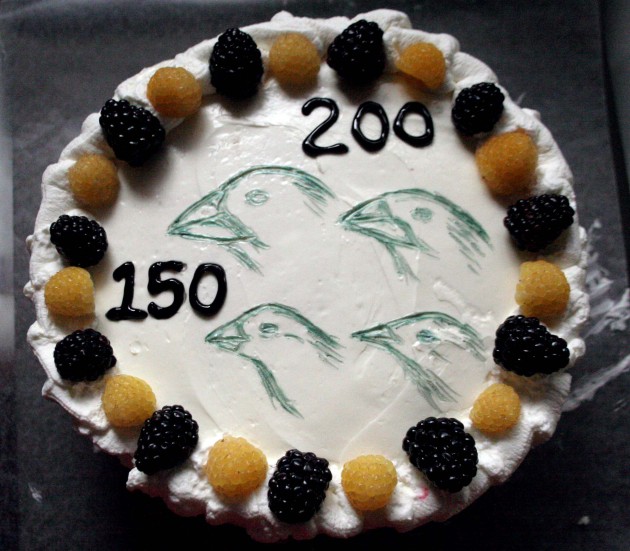
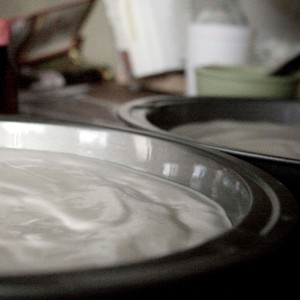 For this special event, I used
For this special event, I used 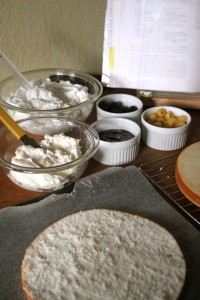 Then came the most dreaded part – sawing the cake rounds in half. Terrible visions of lopsided, crumbled cake fragments filled my head, but I did fine. Not wanting to push my luck, I opted to leave the second round alone, as it wasn’t quite as thick. Then came the fun part – assembling and decorating the cake! Alternating cake rounds with layers of raspberry jam and whipped cream, I topped off the final round and the sides with the buttercream frosting. My first buttercream frosted layer cake! Adding another first, I tried the baker’s trick of using a Ziploc bag to pipe a border of whipped cream around the top. Now, what to put on the blank canvas? A drawing of the
Then came the most dreaded part – sawing the cake rounds in half. Terrible visions of lopsided, crumbled cake fragments filled my head, but I did fine. Not wanting to push my luck, I opted to leave the second round alone, as it wasn’t quite as thick. Then came the fun part – assembling and decorating the cake! Alternating cake rounds with layers of raspberry jam and whipped cream, I topped off the final round and the sides with the buttercream frosting. My first buttercream frosted layer cake! Adding another first, I tried the baker’s trick of using a Ziploc bag to pipe a border of whipped cream around the top. Now, what to put on the blank canvas? A drawing of the 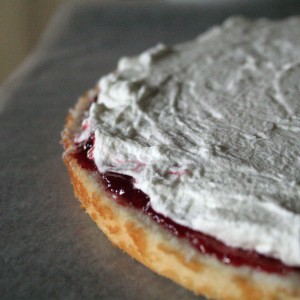
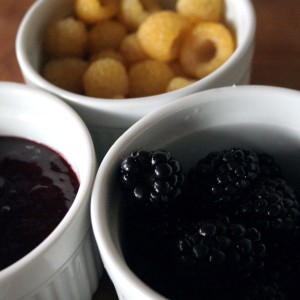
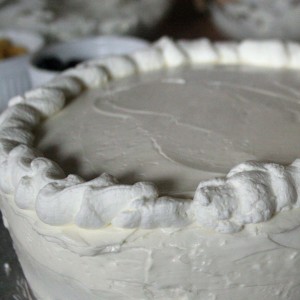














Latest comments